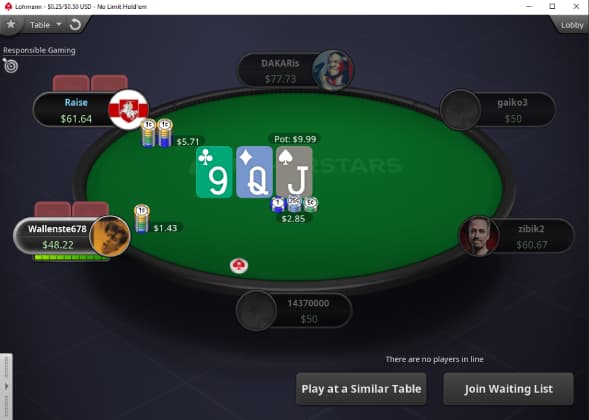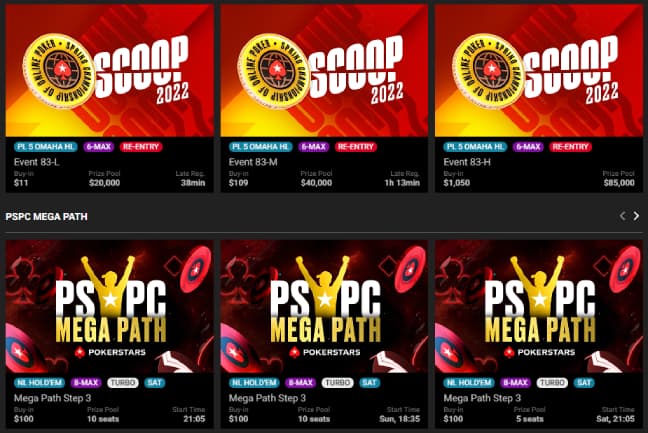What is a poker bankroll?
While not exclusive to poker, bankroll is one of the first terms every new poker player learns. In short, a poker bankroll is the amount of money that you devote to playing poker online or live.
In the case of online poker, a bankroll is usually the sum of all your money on different poker sites. With live games, your bankroll is the money you use to play at the casino.
The two crucial things are: your bankroll should be separated from the money you use to cover your everyday spendings and at the same time, it should be money that you can afford to lose.

What is poker bankroll management?
Bankroll management is a process of spending your money on poker wisely, so as to minimize the risk of going broke. That risk is always there but if you know what you’re doing, losing all of your money is very unlikely.
The most important factor is that you have to be at least a slightly winning player to not go bankrupt. If you are a losing player, sooner or later you will lose all of your money, there’s no way around that. Apart from getting better, of course.
One of the most important things to consider is what you expect from poker. If you are a recreational player who just plays for the thrill of it, you do not have to have any complex bankroll management strategy. Let’s face it, you’re gambling your money and you’ll likely lose it at some point. And there’s nothing wrong with that, as long as you are aware of your poker ability and you know when to call it a day and stop playing.
If you treat poker like a source of occasional, additional income (and you’re good enough to be profitable in your player pool) you can be pretty liberal with your choices. Playing at the stakes that are comfortable for you, should net you some money in the long term, but you can treat it like part of your entertainment budget, with an occasional bonus return.
Proper bankroll management is extremely important only when you are a professional or semi-professional player. And we mean EXTREMELY IMPORTANT. Many superbly talented poker players struggled due to poor bankroll management strategies over their careers.

Bankroll management looks different for different poker formats
Poker finances are a complex topic, but the general rule is that the bigger winner you are, the more liberal you can be. Since games got a little bit tougher in recent years, the bankroll management strategy also changed. Let’s take a look at different most popular poker games and find out what’s the proper bankroll to play them.
Online cash games
It’s a format that’s usually the first online poker experience for many players. The $0,01/0,02 stakes are traditionally the lowest cash game stakes available online. On average buying in for full 100 big blinds is the best idea, so one buy-in equals $2.
How many buy-ins should your bankroll consist of? We’d advise an amount in the vicinity of 50. This will vary from player to player but in our opinion 50 is the sweet spot: a number that should provide you with comfort, some room for poorer performances, and overall peace of mind.
Over time you’ll most likely get better and move up in stakes, but the basic principle will stay the same. While getting new experiences and playing higher stakes you’ll find out by yourself what amount of buy-ins for your regular games you’re comfortable with. Bear in mind though, that it’s really hard to develop a significant edge at the highest stakes so it’s more than likely that you’ll need more buy-ins to keep playing your best game there.

Live cash games
Live cash games are probably the softest games you can play. Your average live cash game table consists mostly of recreational players with occasional huge fish. The reason is simple – people at casinos, more often than not, are there to have fun rather than to win money.
Therefore, regular poker players can achieve a way higher win rate at the same limits live compared to online. Usually, live cash games start at $1/2 which are quite high stakes online (and are way, way tougher).
One thing to keep in mind is that live poker tends to be way crazier than its online counterpart and playing at a single table over one evening may require more money than you’d expect. Buying in for a few hundred big blinds in your average live table of $1/2 over the course of the night is nothing uncommon.
That’s why it’s a good idea to be prepared with at least 30 or so buy-ins for the game you intend to play. Just remember that the craziness at the casino felts is equalized by the softness of the games.

Online multi-table tournaments
This is where things get a little tricky. If you like to play tournaments you have to be prepared for some serious streaks of bad luck. Multi-table tournaments (or MTTs for short) are a format that brings more poker players to the tables than any other game type. The fields in MTTs can be enormous (we’re talking thousands or tens of thousands of players) but then so can the top prizes.
Albeit easy, big fields make poker tournaments extremely volatile. You can be a winning player with a very solid return on investment (ROI) but you still can fail to make any significant money in tournaments with big fields. That’s why tournament players usually need a larger bankroll than other players.
There’s no one rule of thumb but a good starting point is to have 300-500 of your average buy-in. Such a big bankroll should help you to mitigate the effect of negative variance. It’s a good idea to mix tournaments with smaller fields (even if the player pool is a little stronger on average) as it’ll help you to cash often and keep your total bankroll at a desirable level.

Live MTTs
They work on a similar basis to the cash games. Usually, they are way softer than the online ones, but since they can last a few days, you can only play so many of them. Given that you play stakes that you feel comfortable on, we’d advise you have at least 50 buy-ins.
If you’re about to play high stakes (which still tend to be quite soft, especially during bigger festivals) you can always consider staking, which we’ve discussed in detail in another article. If you feel like live tournaments are your thing, take into consideration that live tournament winnings are subject to taxes in some parts of the world, and more importantly, the cost of poker trips can harm your bankroll quite severely if they are not kept in check.
Spin & Go’s
That’s Smart Spin’s bread and butter. Over the years, we’ve gathered dozens of experienced players who crafted the optimal Spin & Go’s strategies and we’ve come up with the best bankroll approach. Although a great format, the thing with Spins is that it’s very difficult to keep on playing them professionally on your own.
Even when your win rate is respectable, you may struggle to make decent money if you’re unlucky at the highest multipliers, especially at higher stakes. That’s why we offer our players both a bankroll with a sufficient number of buy-ins and learning resources which are essential to boost the confidence of the members of our community.
A few other poker bankroll management tips
No matter the game type you’ve chosen, you should have a few things in mind. The more you rely on money made from poker, the bigger your bankroll should be. After all, you want to keep on playing your default games, without moving to the lower stakes after a few bad sessions.
If you are a professional poker player or you aspire to be one someday, you have to treat your poker bankroll as a tool to make money – just like a car is essential for a driver to do his job.
If, on the other hand, you have a steady source of income outside of poker and you do not aspire to be a poker professional, you can be more liberal with your bankroll. As long as your financial status is stable, you can take an occasional shot at higher variance games. After all, poker is supposed to be entertainment in the first place.
Also, don’t keep your entire bankroll on one poker site. Generally speaking, well-known poker platforms are trustworthy , but it’s better to be safe than sorry.
